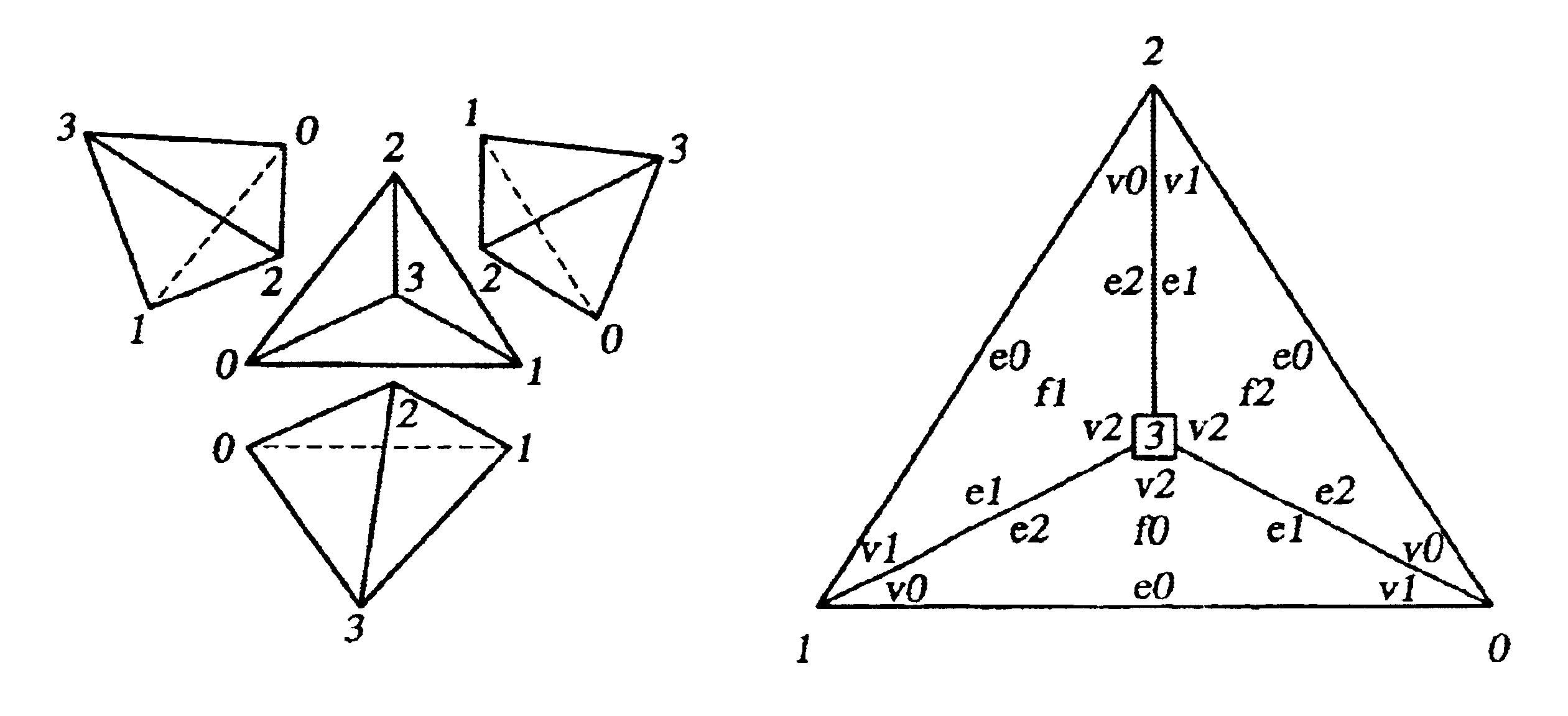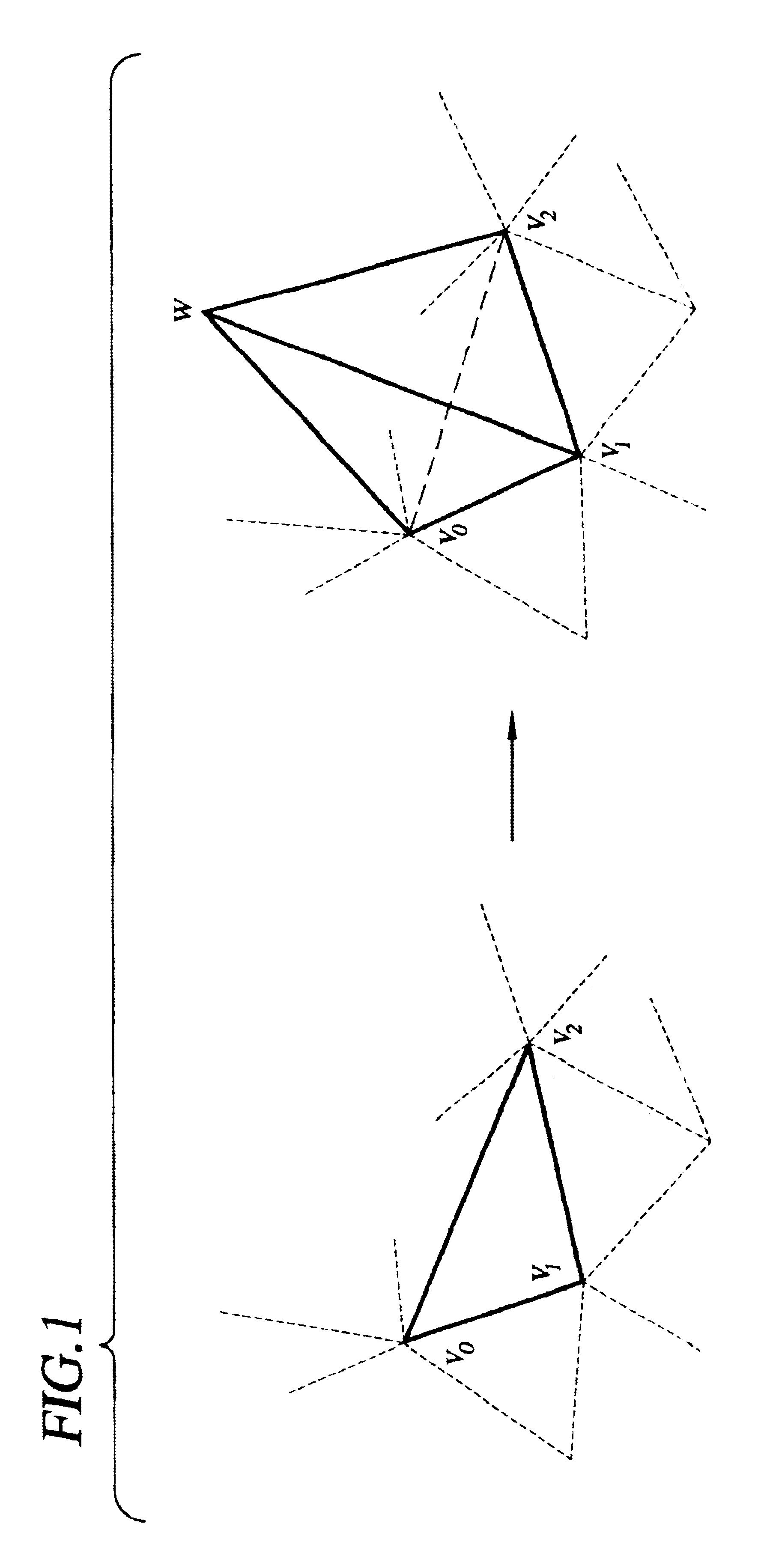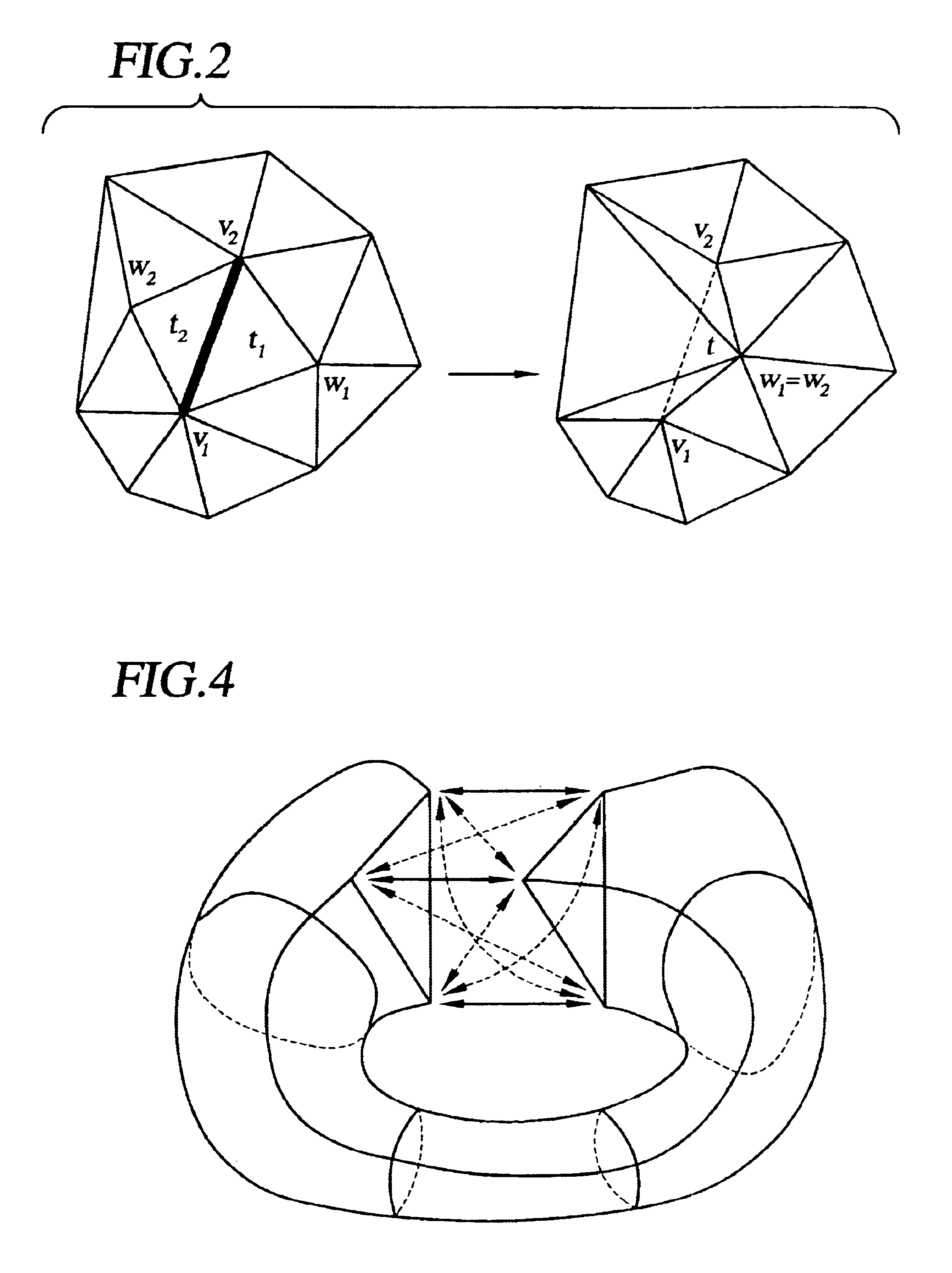Systems and methods for encoding tetrahedral meshes
a tetrahedral mesh and mesh technology, applied in the computer field, can solve the problems of inability to identify the suitable sequence of tetrahedral meshes, inability to treat boundary data structures as compression schemes, and inability to solve complex algorithms and algorithms
- Summary
- Abstract
- Description
- Claims
- Application Information
AI Technical Summary
Problems solved by technology
Method used
Image
Examples
Embodiment Construction
Reference will now be made in detail to the description of the invention as illustrated in the drawings, wherein like reference numbers indicate like parts throughout the several views. As presented herein, a preferred embodiment of the tetrahedral mesh encoding system of the present invention generally may be described as comprising two components: 1) information defining a complex containing information corresponding to tetrahedra appearing in the encoded mesh and some of the incidence relationships, and; 2) instructions regarding how to uncover incidence relationships absent from the complex, preferably through the use of folding and gluing operations, as described in detail hereinafter.
As an introductory matter, a tetrahedron tree is a three-dimensional simplicial complex which can be obtained from a single tetrahedron as a result of gluing, i.e., incrementally applying the operation of attaching a tetrahedron to an external face. As shown in FIG. 1, attaching a tetrahedron to a...
PUM
 Login to View More
Login to View More Abstract
Description
Claims
Application Information
 Login to View More
Login to View More - R&D
- Intellectual Property
- Life Sciences
- Materials
- Tech Scout
- Unparalleled Data Quality
- Higher Quality Content
- 60% Fewer Hallucinations
Browse by: Latest US Patents, China's latest patents, Technical Efficacy Thesaurus, Application Domain, Technology Topic, Popular Technical Reports.
© 2025 PatSnap. All rights reserved.Legal|Privacy policy|Modern Slavery Act Transparency Statement|Sitemap|About US| Contact US: help@patsnap.com



